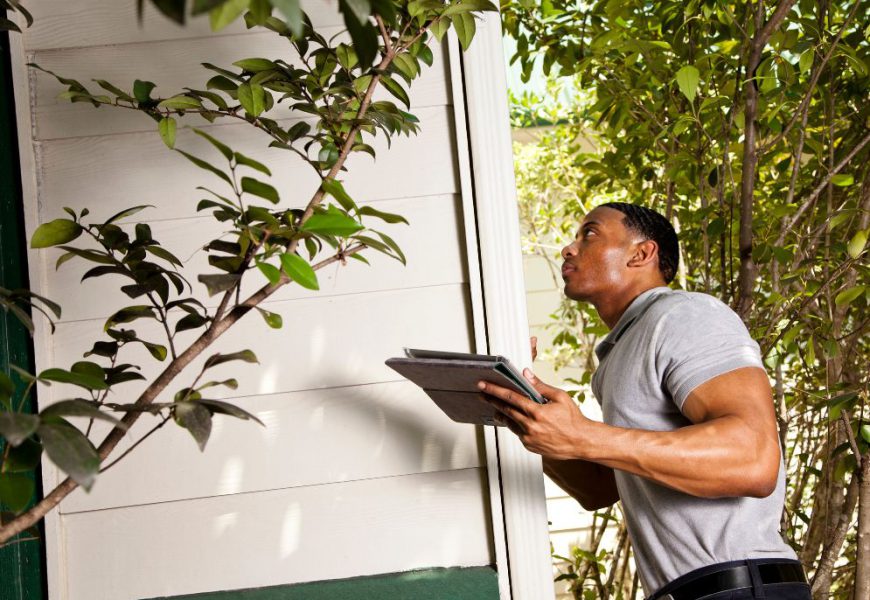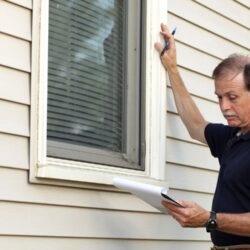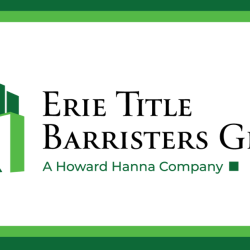Purchasing a home is one of the most significant financial investments you’ll make in your lifetime. Although it’s an exciting milestone, it can also be a bit overwhelming (especially for first-time homeowners). A crucial part of the homebuying process is to have an inspection. This can save you from unexpected expenses later on and address items that need to be repaired before closing. Buy your dream home with confidence and have a thorough, professional inspection performed on the property. Here’s what to look for in a home inspection to make an informed purchase.
Structural Integrity
- Foundation: Cracks, shifting or settling can indicate major issues. Check for visible cracks in the foundation, walls and ceilings.
- Roof: Look for missing, damaged or curled shingles. Pay attention to the condition of the gutters and downspouts as well.
- Walls and Floors: Uneven floors, signs of water damage, sagging ceilings, load-bearing walls, beams and columns.
Plumbing System
- Pipes: Inspect pipes for leaks, corrosion or rust. Make sure there’s adequate water pressure in all faucets.
- Water Heater: Check the age and condition of the water heater. Look for any signs of rust or leaks.
- Drainage: Ensure that sinks, tubs, and toilets drain properly. Slow drainage can indicate a blockage or more serious plumbing issues.
Electrical System
- Wiring: Look for outdated or faulty wiring, which can be a fire hazard. Aluminum wiring and knob-and-tube wiring should be assessed carefully.
- Circuit Breakers: Ensure the electrical panel is up to code and can handle the home’s electrical load (i.e., no overloaded circuits).
- Outlets and Switches: Test all outlets and switches to ensure they are functioning properly. Look for any signs of discoloration or scorching.
Heating, ventilation and air conditioning (HVAC) System
- Furnace and Air Conditioning: Check the age and condition of the furnace and the functionality of the air conditioning units.
- Ductwork: Inspect the ducts for signs of mold, dust or debris. Ensure there are no leaks or blockages.
- Thermostat: Test the thermostat to make sure it controls the temperature effectively.
Roof and Attic
- Roof: Check for leaks, mold and other signs of wear and tear.
- Insulation: Ensure the attic is properly insulated to improve energy efficiency and comfort.
- Ventilation: Check for proper ventilation to prevent moisture buildup, which can lead to mold growth.
- Pests: Look for signs of pests or rodents, such as droppings or nests.
Interior and Exterior
- Windows and Doors: Ensure they open and close smoothly. Look for signs of rot, water damage or broken seals.
- Siding: Check for signs of moisture or pet damage, rot, cracks, stains or peeling paint on exterior walls.
- Decks and Porches: Inspect for any loose boards, railings or signs of rot.
Basement and Crawl Spaces
- Moisture: Look for signs of moisture, such as dampness, water intrusion, water stains or musty odors. This could indicate drainage issues or potential mold problems.
- Foundation: Inspect for any visible cracks or structural issues. Check for proper insulation.
- Pests: Check for signs of termites, rodents or other pests.
Appliances
- Condition and Functionality: Test all included appliances and bathroom fixtures to ensure they are in good working order.
- Age: Note the age of major appliances like the stove, dishwasher and refrigerator. Older appliances may need to be replaced sooner.
Safety Features
- Smoke and Carbon Monoxide Detectors: Ensure they are present and functional.
- Fire Extinguishers: Check for fire extinguishers in key areas of the home.
- Security System: If the home has a security system, ensure it is in working order.
Environmental Concerns
- Radon: Consider testing for radon, especially in areas where it’s known to be a problem.
- Asbestos and Lead Paint: In older homes, check for the presence of asbestos and lead paint, which can be health hazards.
While this checklist covers the basics, hiring a qualified and experienced home inspector will provide you with peace of mind and confidence in your investment. Remember, the goal is to uncover potential issues before they become costly problems, ensuring that your new home is safe, sound and secure. Happy house hunting!










